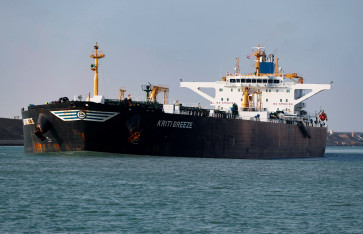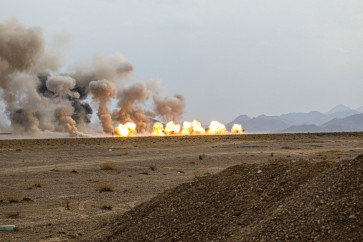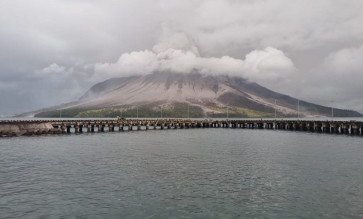Green Map aims to take Jakartans to water
Volunteers from the Jakarta Green Map community have encouraged city residents to explore the potentials of natural and artificial lakes and dams in Greater Jakarta, by launching a map that highlights them
Change Size

Volunteers from the Jakarta Green Map community have encouraged city residents to explore the potentials of natural and artificial lakes and dams in Greater Jakarta, by launching a map that highlights them.
The map points out the locations of 30 lakes and dams in Jakarta, and at least 25 lakes and dams in the capital's satellite cities.
The group initiated the mapmaking project in April, in the wake of the Situ Gintung dam burst in March, which killed nearly 100 residents and destroyed hundreds of homes.
"The Situ Gintung tragedy has sent a clear message to us: never ignore nature," Jakarta Green Map coordinator Nirwono Joga said last week at the launch of the new map at the Srengseng city forest in West Jakarta.
"Lakes and dams have contributed much as sources of water, as well as to control flooding and serve as recreational places, so it's time for us to restore them."
Some of the interesting spots mapped out by the group include Situ Cileduk in Tangerang, Muara Angke in North Jakarta, Situ Rawa Jemblung in East Jakarta, Situ Srengseng in West Jakarta and Situ Lembang in Central Jakarta.
Other locations that might be alternative recreational places for city residents include Situ Ragunan in South Jakarta, Sunter Timur dam in North Jakarta, Situ Babakan Jagakarsa in South Jakarta, and Situ Kenanga and Situ Salam in Depok.
"By understanding the sites and their potentials, residents are expected to be more aware of the roles they play in preserving these bodies of water," Nirwono said.
Preservation efforts are necessary, he went on, considering the rapidly deteriorating conditions of lakes and dams in Greater Jakarta, with 68 percent of them damaged, according to Green Map community estimates.
The group says only 20 percent of the lakes and dams remain in good condition, while 4.5 percent have been converted into land and several others have quite simply vanished off the landscape.
The vanished dams identified by the group are in Kelapa Gading Barat in North Jakarta, Rawa Terate and Jatinegara in East Jakarta, and Ulujami, Cilandak Timur and Cilandak Barat in South Jakarta.
Data from the Office of the State Minister for the Environment reveal the total area covered by lakes and dams has shrunk from 2,300 hectares in 1970 to 1,400 hectares in 2008.
The Green Map community says the degradation of the bodies of water is mostly due to sedimentation and the fact that the areas are being converted into rice paddies, residential areas, offices and public facilities.
The group called on the city administration to pay more attention to the conservation of the existing lakes and dams.
They also urged the creation of more such areas to help control the city's chronic flooding problem and add to the rapidly depleting supply of groundwater in the city, as well as to serve as new ecotourism destinations.
"It is also important to identify endemic wildlife species in lakes and dams, as they serve as indicators of the water quality," said Evi, a volunteer from the Jakarta Green Monster community, which supported the mapmaking project.
"If a huge population of armored catfish, for instance, is found in a dam, it means the dam is highly contaminated," she said.
This new map of dams and lakes is the sixth edition of the Jakarta Green Map launched by the environmentally focused volunteer community.
The fifth edition, launched earlier this year, mapped out routes for public transportation in Jakarta.
The maps are expected to motivate people into adopting more environmentally sustainable lifestyles.
"We are not only mapping out the locations, but also exploring what can be found along the routes, including wildlife, as well as places representing culture, society and environmentally sustainable lifestyles," Nirwono said.
The community also invites people to join in the mapmaking, either by mapping out their own areas or by adding more places to the existing maps.
Information about the Jakarta Green Map can be obtained at www.greenmap.or.id.









